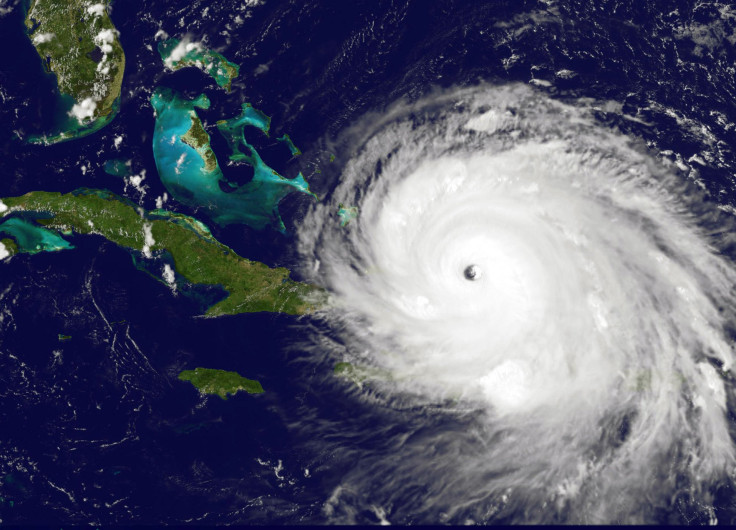The Science Behind Hurricanes Causing Violent Tornadoes Explained

While several parts of the Texas are still reeling from the devastating impact of Hurricane Harvey that lashed through the state last month, Hurricane Irma has caused widespread devastation in Florida. The total cost of damage from the hurricanes in the United States is estimated to be between $150 billion and $200 billion dollars, according to a report published by ABC News. The destruction caused by these hurricanes has been compared to the devastating effect of Hurricane Katrina in 2004.
On Sunday, the Los Angeles Times reported that the greatest danger in Central Florida might be from the tornados caused by Irma. At least four concurrent tornado warnings were issued in Brevard, Seminole, Volusia and Orange counties of Florida, the report said. However, it is often overlooked how hurricanes spawn tornadoes — the twisting columns of air that can cause a lot of damage.
Among the areas that are expected to be worst hit by Irma are northern Florida, Alabama, Georgia, Tennessee and South Carolina. Residents here should be prepared for severe impact on the property, Accuweather warned in a report.
The tornado warning is issued only when it has been spotted. A hurricane is a giant storm capable of generating winds ranging from a 74-95mph category 1 hurricane all the way up to 157 mph, which is a category 5 storm, according to the Saffir-Simpson Hurricane Wind Scale followed by the National Hurricane Centre.
Though hurricanes and tornadoes are created under separate environmental conditions, they are interconnected. Tropical storms or hurricanes are essential to cause a tornado and almost every hurricane is accompanied by tornadoes.
So how does a hurricane cause a tornado? Tornadoes are formed due to the instability in the opposing vertical and horizontal forces in the wind. These highly unstable low altitude tropical storms produce small superstorm cells. The storm cells are formed because of the high vertical shear force (or perpendicular force) acting on an already chaotic system. The turbulent wind direction changes, coupled with the high vertical force because of the low attitude, form a supercell storm.
Vertical wind shear occurs when there are changes in the wind speed and direction with an increase in altitude. When there's enough wind shear in the atmosphere, it can create horizontal tubes of rotation about two miles above the earth's surface. These wind tubes align to a counter-clock wise spin in the Northern hemisphere. According to a report by the Vane, a climate and weather blog, supercells are essentially mini low-pressure systems.
These unusually small but superstorm cells often go undetected by the weather satellites and the land radars that track cloud pattern and movement. Lack of lightning and thunder in the small systems often evades even the trained meteorologists. This is what makes these supercell tornadoes so dangerous. The transition from storm winds to a swirling tornado can be rather abrupt leaving no time for people to escape.
Tornadoes form over land in most cases. The increased wind resistance that land offers on one side increases shear forces, spawning tornadoes. This factor propels tornado formation during hurricanes after they make landfall. Since Irma is currently hurtling over land, the high probability of a tornado has been raising concerns.
This video explains the science behind the formation of supercells in detail.
According to the information provided by the Central Pacific Hurricane Center, which is the central-pacific hub of the government-led awareness and research center for hurricanes, cyclones can produce tornadoes up to three days after the landfall. Statistics show that most of the tornadoes occur on the day of landfall, or the next day. Most tornadoes occur during the day whereas there is also a possibility of a tornado forming at night.
Tornadoes outstrip hurricanes when it comes to top wind speeds. But when it comes to the extent of damage to human life and property, the sheer longevity of a hurricane gives it the top spot. The strongest tornadoes of a damage scale of 4 and 5 have estimated winds of 207 mph and higher, while the strongest hurricanes have winds of 131 mph and higher. Each hurricane that makes a landfall causes an average damage of about $3 billion with annual damages touching $5 billion.
According to the CPHC, about 100 tornadoes hit the U.S. every year and cause damages worth $500 million, which is roughly 10 times lesser than the hurricanes.
The recent events have already left a devastating trail of rubble in their path. Judging by the weather reports, people are advised to keep a watch on local weather stations’ Twitter pages to track any tornadoes.
© Copyright IBTimes 2024. All rights reserved.





















